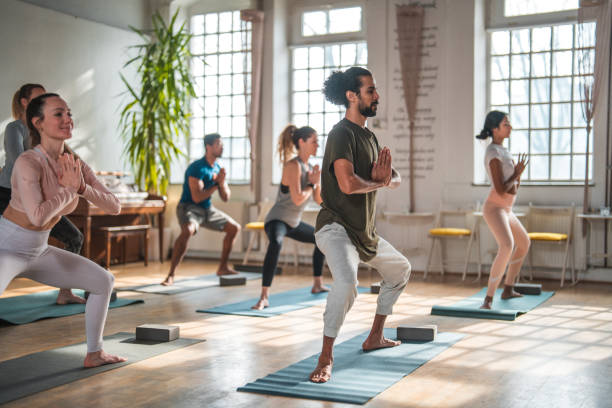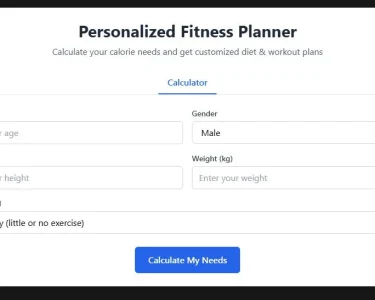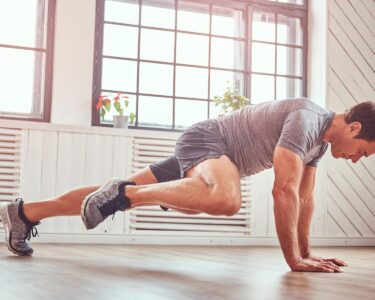Exercise involves engaging in physical activity and increasing the heart rate beyond resting levels. It is an important part of preserving physical and mental health. Whether people engage in light exercises, such as going for a walk, or high intensity activities, for example, uphill cycling or weight training, regular exercise provides a huge range of benefits for the body and mind.
Taking part in exercise of any intensity every day is essential for preventing a range of diseases and other health issues. In this article, we explain the different types of exercise and their benefits, as well as the considerations for designing a fitness regime.
Types and benefits
People divide exercise into three broad categories:
- Aerobics
- Anaerobic
- Agility training
We describe each of these categories below.
Aerobic exercise
There are several types of exercise, and they provide a range of benefits for health and well-being.
Aerobic exercise aims to improve how the body uses oxygen. Most aerobic exercise takes place at average levels of intensity over longer periods. An aerobic exercise session involves warming up, exercising for at least 20 minutes, and then cooling down. Aerobic exercise mostly uses large muscle groups.
Aerobic exercise provides the following benefits:
- Improves muscle strength in the lungs, heart, and whole body
- Lowers blood pressure
- Improves circulation and blood flow in the muscles
- Increases the red blood cell count to enhance oxygen transportation
- Reduces the riskTrusted Source of diabetes, stroke, and cardiovascular disease (CVD)
- Improves life expectancy Trusted Source and symptoms for people with coronary artery diseases
- Stimulates bone growth and reduces the risk of osteoporosis when at high intensity
- Improves sleep hygiene
- Enhances stamina by increasing the body’s ability to store energy molecules, such as fats and carbohydrates, within muscle
Anaerobic exercise
Anaerobic exercise does not use oxygen for energy. People use this type of exercise to build power, strength, and muscle mass. These exercises are high-intensity activities that should last no longer than around 2 minutes. Anaerobic exercises include:
- Weightlifting
- Sprinting
- Intensive and fast skipping with a rope
- Interval training
- Isometrics
- Any rapid burst of intense activity
While all exercise benefits the heart and lungs, anaerobic exercise provides fewer benefits for cardiovascular health than aerobic exercise and uses fewer calories. However, it is more effective than aerobic exercise for building muscle and improving strength.
Increasing muscle mass causes the body to burn more fat, even when resting. Muscle is the most efficient tissue for burning fat in the body.
Agility training
Agility training aims to improve a person’s ability to maintain control while speeding up, slowing down, and changing direction. In tennis, for example, agility training helps a player maintain control over their court positioning through good recovery after each shot. People who take part in sports that heavily rely on positioning, coordination, speed, and balance need to engage in agility training regularly.
The following sports are examples of ones that require agility:
- Tennis
- American football
- Hockey
- Badminton
- Volleyball
- Basketball
- Soccer
- Martial arts
- Boxing
- Wrestling
- Stretching and flexibility
Yoga can help improve a person’s flexibility and relieve stress.
Some exercises combine stretching, muscle conditioning, and balance training. A popular and effective example is yoga.
Yoga movements improve balance, flexibility, posture, and circulation.
The practice originated in India thousands of years ago and aims to unify the mind, body, and spirit. Modern yoga uses a combination of meditation, posture, and breathing exercises to achieve the same goals.
A yoga practitioner can tailor a course to individual needs.
A person looking to manage arthritis might need gentle stretches to improve mobility and function. Someone with depression, on the other hand, may need more emphasis on the relaxation and deep breathing elements of yoga.
Pilates is another stretching option that promotes flexibility and core strength. Tai chi is also an effective option for exercise that promotes calm stretching rather than intensity.
Risks of not exercising
A sedentary lifestyle can increase the riskTrusted Source of the following health problems:
- Cardiovascular disease
- Type 2 diabetes
- Cancer
- Osteoporosis
It can also contribute to an increased risk of premature death from all causes, including the complications of being overweight and obesity.
In many parts of the world, including the United States, the number of overweight and obese people continues to increase rapidly.
According to the most recent National Health and Nutrition Examination SurveyTrusted Source, that researchers did in 2013–2014 across the US, more than 2 in 3 adults are overweight or obese.
The same survey found that around 1 in 13 adults have extreme obesity and face an increased risk of severe health complications.
Discover how to prevent cardiovascular disease
Finding time to exercise
Taking the stairs instead of an elevator can be a great way for busy people to meet exercise guidelines.
Fitting exercise into a busy schedule can be a roadblock to a successful regimen. However, people do not need to dedicate large amounts of extra time to exercise to see the benefits.
Here are some tips for fitting physical activity into a busy schedule:
- See which car journeys you can replace with walking or cycling. Is driving to work necessary? If so, try parking half a mile away from the office and walking the final bit.
- People who commute to work by public transport could try getting off their bus or train a few stops early and walking the rest of the way.
- Consider walking up and down the stairs at your office instead of taking elevators or escalators.
- Try to think about the amount of time spent watching television and avoid binge-watching TV shows. While watching television for extended periods, light exercises, such as stomach crunches or jumping jacks, can help a person include more physical activity in their day.
- If a person enjoys video games, they could consider playing games that encourage physical activity, such as exercise routines on a Nintendo Wii.
- Vigorous housework, gardening, and going up and down the stairs while doing chores also qualify as physical activity and can help people meet the guidelines productively.
- People will likely gain the most benefit from exercises they enjoy that fit their lifestyle.







